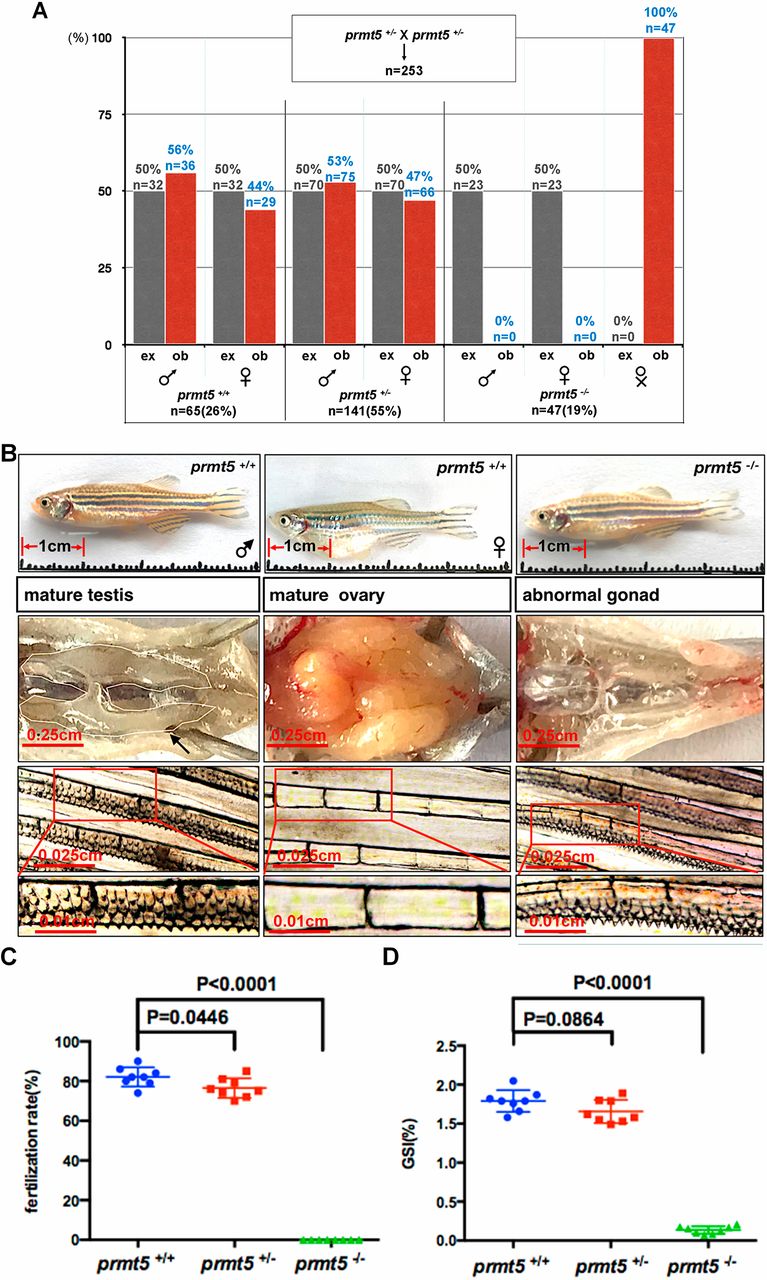Fig. 1
Loss of prmt5 in zebrafish reduces larval survival and generates an infertile male-like phenotype. (A) The 253 offspring of prmt5+/− (♀)×prmt5+/− (♂) matings; percentages of expected (ex, gray bars) and observed (ob, red bars). The observed percentage of prmt5−/− zebrafish (19%) was less than expected (25%). (B) The testes/ovaries and breeding tubercle in prmt5-null zebrafish (prmt5−/−) and their wild-type siblings (prmt5+/+) at 150 dpf. All prmt5−/− adults had atrophied testes, whereas prmt5+/+ adults had normal testes/ovaries. Both adult male prmt5+/+ and prmt5−/− zebrafish had breeding tubercles (arrow), which were not observed in adult female prmt5+/+ zebrafish (n=10, respectively). Red boxes indicate the positions of the magnified sections underneath. (C) The fertilization rate of prmt5+/+, prmt5+/− and prmt5−/− male zebrafish. Bars show means of eight independent experiments; error bars show s.d. (n=8, respectively). (D) The gonado-somatic indexes (GSI) of prmt5+/+, prmt5+/− and prmt5−/− male zebrafish (n=8, respectively). Differences between two groups were determined by unpaired two-tailed Student's t-test. Bars show means of eight independent experiments; error bars show s.d.

